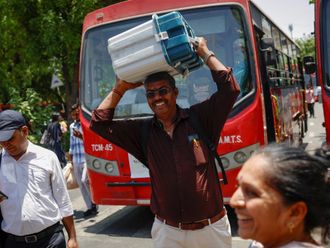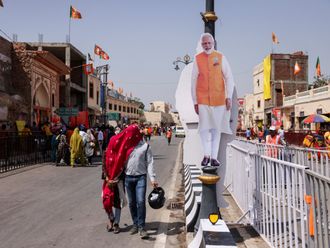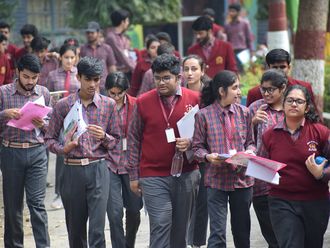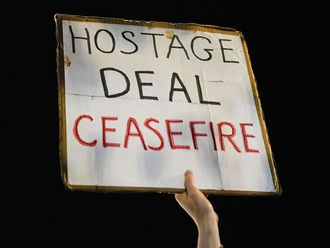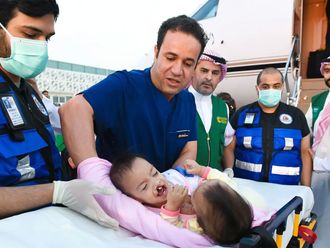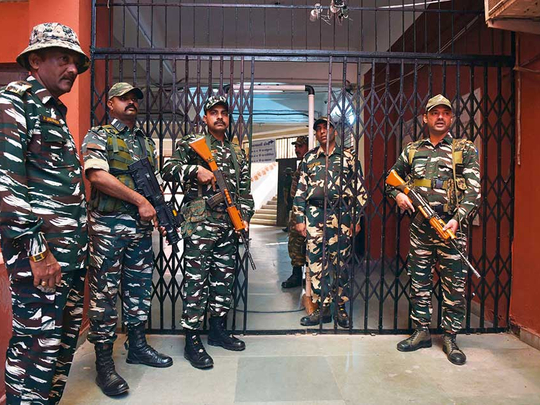
Ahmedabad: The counting of votes will take place tomorrow for the Gujarat Assembly polls, considered a battle of prestige for Prime Minister Narendra Modi in his home state and a litmus test for new Congress president Rahul Gandhi.
While the Bharatiya Janata Party (BJP) is seeking a sixth straight term in office, the Congress is aiming to stage a comeback in power after being in the opposition for more than two decades.
The results are expected to have a bearing on the 2019 parliamentary polls, too, as Modi had come to power in 2014 touting Gujarat as the ‘model of development’.
The much-awaited results of the keenly fought elections will be announced tomorrow, when the counting of votes will be held at 37 centres across the state’s 33 districts, amid tight security.
Voting was held following an acrimonious campaign, where both the main political parties indulged in no-holds-barred attacks on each other.
Modi led the campaign for the BJP, while Gandhi was the pivot of Congress’ electioneering.
During the campaign, Modi and BJP chief Amit Shah slammed the Congress on issues such as Ram Temple, alleged Pakistani interference in the Gujarat polls and (suspended Congress leader) Mani Shankar Aiyar’s remarks.
Gandhi persistently attacked Modi and the BJP for “not talking about the future of Gujarat” and skipping key issues in the state.
The Congress also stitched a broad social coalition with prominent Patidar, OBC, and Dalit leaders — Hardik Patel, Alpesh Thakor and Jigesh Mevani — in its bid to unseat the BJP, which has been in power for more than two decades.
Patel led a long protest in his community for reservation, while Thakor led an counter protest against the inclusion of Patidars in the OBC reservation list. Mevani raised his voice against Dalit atrocities.
The influential Patidar community, which accounts for around 12 per cent of the state’s population, could prove to be the ‘X factor’ in the polls, in which Patel pledged support to the Congress and appealed to people to “uproot the BJP” this time.
As the campaign was nearing its end, vikas, or development, took a back seat, and caste and religious issues received prominence.
The two rival parties also tried to spar on social media, with the Congress and its supporters launching campaign Vikas Gando Thayo Che [development has gone crazy] and BJP initiating a counter drive called “I am development, I am Gujarat”.
An average of 68.41 per cent polling was recorded in the two-phase Assembly elections in Gujarat.
According to the final figures released by the Election Commission, the voter turnout in the second phase of balloting, on December 14, for 93 seats of North and Central Gujarat, stood at 69.99 per cent.
In the first phase of polls held on December 9 for 89 seats in Saurasthra, Kutch and South Gujarat, 66.75 per cent voting was recorded.
The total voter turnout this time has seen a dip of 2.91 per cent, compared with the 2012 polls when 71.32 per cent polling was registered.
In terms of numbers, of the total 43.5 million registered voters, 29.7 million exercised their right to vote in the elections held on December 9 and 14.
According to the Election Commission data, the tribal-dominated Narmada district witnessed the highest voter turnout, of 79.15 per cent, while Devbhumi-Dwarka of Saurashtra region recorded the lowest, 59.39 per cent.
The districts that recorded a high turnout are — Tapi (78.56 per cent), Banaskantha (75.15) and Sabarkantha (74.97). The districts which saw a low turnout are — Amreli (61.29), Bhavnagar (61.56) and Porbandar (61.86).
Of the total 33 districts, 15 recorded more than 70 per cent polling, while 17 others clocked between 60 per cent and 70 per cent.
Only Devbhumi Dwarka district registered polling below 60 per cent.


